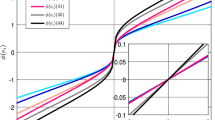Abstract
In order to numerically solve the minimum-time control problem of a linear system, the system is usually discretized with a fixed sampling period. Then the minimum count of control steps is searched to meet the constraints of the final state and the input variables. Since the count is a variable, there is no direct way for handling such problems except by exhaustive iteration. In contrast to the traditional methods, a new numerical technique was developed recently to avoid the exhaustive iteration. In this method, the control step is fixed and the sampling period is treated as a variable. Since this method requires only two iterations, it will reduce the computation time significantly. This paper applies this new numerical technique to generate the minimum-time trajectory between two end-points for an inverted pendulum under force constraints. Two main issues are addressed. The first one is the problem formulation in discrete-time domain and the second one is the generation of feasible solutions for the global search. Simulation examples are included for illustration.
Similar content being viewed by others
References
Anderson, C. W.: Learning to control an inverted pendulum using neural networks,IEEE Contr. Syst. Mag. (1989), 31–37.
Canon, M. D., Cullum, C. D. and Polak, E.:Theory of Optimal Control and Mathematical Programming, McGraw-Hill, New York, 1970.
Cannon, Jr, R. H.:Dynamics of Physical System, McGraw-Hill, New York, 1967.
Cheok, K. C. and Loh, N. K.: A ball-balancing demonstration of optimal and disturbance-accommodating control,IEEE Contr. Syst. Mag. 7(1) (1987), 54–57.
Chung, T. S. and Wu, C. J.: A computationally efficient numerical algorithm for the minimum-time control problem of continuous systems,Automatica 28(4) (1992), 841–847.
Eastwood, E.: Control theory and the engineer,Proc. IEEE 115(1) (1968), 203–211.
Guez, A. and Selinsky, J.: A trainable neuromorphic controller,J. Robotic Syst. 5(4) (1988), 363–388.
Kirk, D. E.:Optimal Control Theory, Prentice-Hall, Englewood Cliffs, NJ, 1970.
Kosko, B.:Neural Networks and Fuzzy Systems, Prentice-Hall, Englewood Cliffs, NJ, 1992.
Lasdon, L. S. and Waren, A. D.:GRG2 User's Guide, Department of General Business, University of Texas at Austin, Austin, TX, 1986.
Lasdon, L. S., Waren, A. D., Jain, A. and Ratner, M.: Design and testing of a generalized reduced gradient code for nonlinear programming,ACM Trans. Math. Software 4 (1978), 34–50.
Luenberger, D. G.:Linear and Nonlinear Programming, Addison-Wesley, Reading, MA, 1984.
Ogada, K.:Modern Control Engineering, 2nd ed., Prentice-Hall, Englewood Cliffs, NJ, 1990.
Polak, E.:Computational Methods in Optimization:A Unified Approach, Academic Press, New York, 1971.
Pontryagin, L. S., Boltyanskii, V. G., Gamkrelidze, R. V. and Mischenko, E. F.:The Mathematical Theory of Optimal Process, Wiley-Interscience, New York, 1962.
Press, W. H., Riche, R. E. and Danor, M. D.:Numerical Recipes in Pascal:The Art of Scientific Computing, Cambridge University Press, Cambridge, 1989.
Widrow, B.: The original adaptive neural net broom-balancer,Int. Symp. Circuits and Syst. (1989), 351–357.
Author information
Authors and Affiliations
Rights and permissions
About this article
Cite this article
Wu, CJ. Minimum-time control for an inverted pendulum under force constraints. J Intell Robot Syst 12, 127–143 (1995). https://doi.org/10.1007/BF01258382
Received:
Accepted:
Issue Date:
DOI: https://doi.org/10.1007/BF01258382



